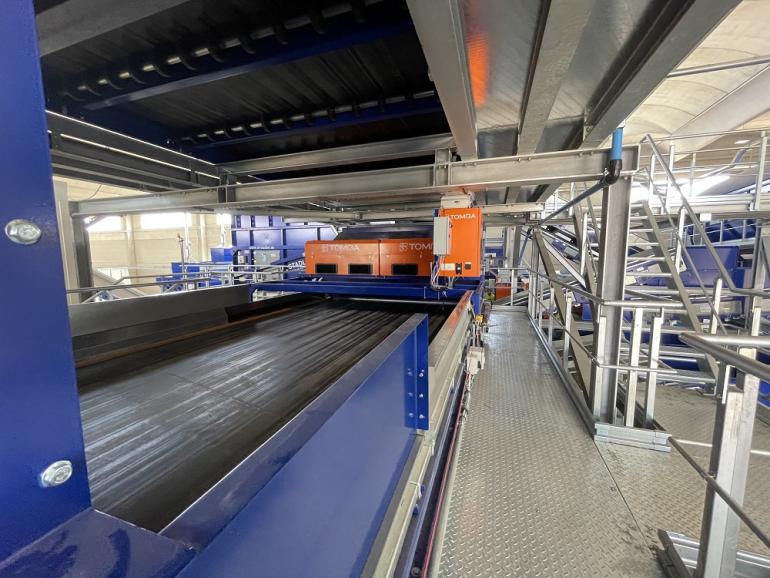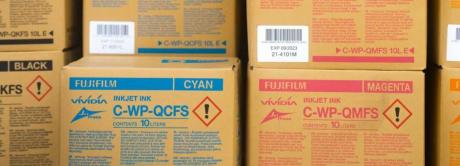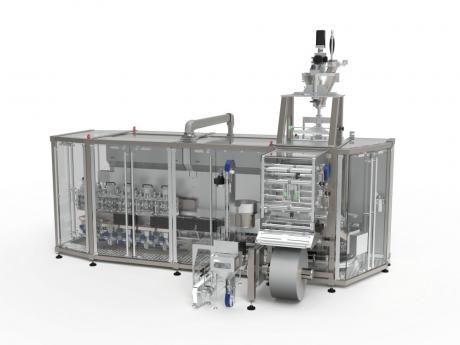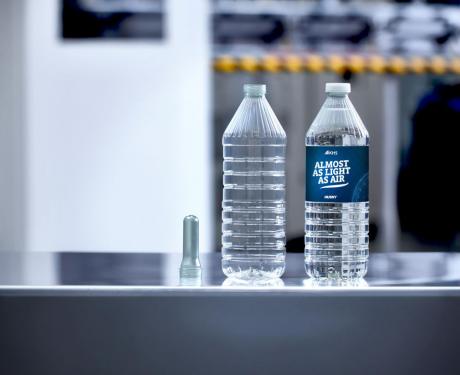Eco.Ge.Ri is the Porcarelli Group's latest waste treatment and valorisation plant, based on five Autosort sorting platforms from Tomra, a manufacturer of sensor-based solutions for optimal resource productivity, within a plant designed and built by Stadler, a company specialising in the design and assembly of recycling and sorting plants. The plant will be capable of recovering as much recyclable material as possible, with the remainder being used as a secondary solid fuel after further processing to remove contaminants.
The Eco.Ge.Ri plant, to be inaugurated in 2022 in Finale Emilia (Modena), will produce secondary solid fuel (CSS), an alternative to fossil fuels, obtained from the dry component (plastic, paper, textile fibres, etc.) of non-hazardous waste through special treatments to separate it from non-combustible materials. The plant in Emilia Romagna is one of the most innovative in Europe, diverting around 150,000 tonnes of waste from landfills each year by processing non-hazardous special waste. Eco.Ge.Ri is part of the Porcarelli Group, which operates along the entire waste chain, from collection and transport to the valorisation of waste as raw materials.
Luciano Porcarelli, co-owner with his brother Giuseppe of the group of the same name, explains:
Our company was founded more than 50 years ago with the conviction that waste could replace raw materials in industry, thus conserving natural resources.
The Porcarelli Group is made up of four companies, five factories and a waste management service company, which are united by a single objective: to give value to waste. With this mission, in 2022, 90% of the waste treated in the plants will be recovered, for a total recovery of over 400,000 tonnes of waste.
To design and build the new plant in Emilia, the company drew on the experience of Stadler and Tomra, which develops and produces sensor-based sorting technologies for the global recycling and waste management sector, to transform resource recovery and create value to achieve its objectives: to select incoming waste to be transformed into raw materials and only the remaining non-recyclable part into high-quality CSS for use in cement factories and waste-to-energy plants. CSS makes it possible to convert waste that is not always recyclable into a new, less polluting source of energy that can be used instead of fossil fuels.
Stadler was responsible for the design and construction of the plant, which was completed within the specified three-month time frame and commissioned on 6 June 2022. The variability of the feedstock posed a real challenge for the design of the plant, which had to ensure a high recovery rate and the production of CSS of the highest possible quality.
Fabrizio Gasparin, Sales Manager Italy at Tomra Recycling Sorting, explained:
Eco.Ge.Ri required state-of-the-art sensor technology and, above all, a great deal of experience in the field. Together with our technicians and Stadler's engineers, we identified the most suitable type of machine for the plant, capable of recovering even the smallest amount of plastic and at the same time guaranteeing the quality of the CSS produced, thanks to a sorting platform specifically designed for this material.
The solid secondary fuel preparation process consists of a number of processes: preliminary shredding, screening and ballistic separation using Stadler machines, removal of ferrous and non-ferrous metals, followed by removal of material containing chlorine or flame retardants using Tomra selectors. This is followed by final shredding of material that cannot otherwise be recovered.
The five Autosorts have been positioned at different points on the line: two are responsible for selecting the 2D fraction, where they remove plastics with high chlorine values; two are in the 3D flow and select the plastics for recovery (PET, PEHD, PELD) and, positively, the CSS. Then, at the end of the line, an Autosort RDF is dedicated exclusively to analysing the fuel thus obtained, evaluating its parameters so that they respect the characteristics necessary for the required uses.









